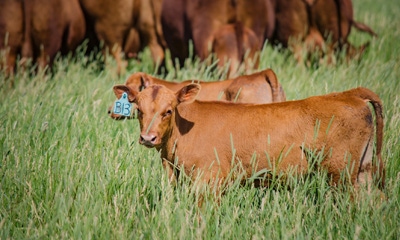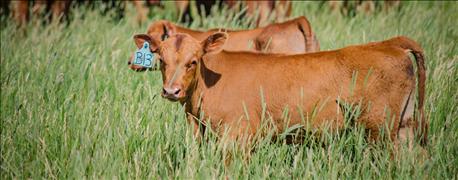September 16, 2016

The recent market downturn and realization that weaned calves are worth half of what they were two years ago has cattle producers across the country scrambling to find ways to save $1 here and $10 there in an effort to come up with enough by the end of the year to satisfy the banker.
Periodic, honest review of animal health investments is always prudent — and in economic downturns, necessary. The following is a short list of considerations that producers and their veterinarians should examine and determine if they are economically justifiable.

WEIGHING COSTS: The current lower cattle prices make it a prudent idea to review your use of vaccines and other animal care treatments.
• Bovine viral vaccines (IBR, BVD, etc.): In most cases, these vaccines are small investments and can be viewed as an insurance policy against a wreck. Infectious bovine rhinotracheitis (IBR) and bovine viral diarrhea (BVD) are real, highly contagious pathogens that are prevalent in the U.S. cattle industry. Co-mingling at sale barns and multisource feeder cattle groups are the reality, and both viral pathogens are present and real.
In the case of BVD, persistently infected calves that were infected in their dam’s uterus will shed high amounts of virus to their pen-mates for life. The viral vaccines are highly effective. The few dollars of investment per calf is easily justifiable. Remember that when you are selling your calves, you are also selling your reputation. If your buyer has a wreck with them, he will not be your buyer in the future.

LARRY GOELZ
• Bacterial pneumonia (Mannheimia) vaccines: These are vaccines targeted to prevent bacterial pneumonia (shipping fever). They are not perfect, however. They will significantly reduce respiratory pulls in young, stressed cattle, yet you will still treat pneumonia in vaccinated cattle. Their use in lightweight calves is easy to justify, but is not as important in older cattle such as yearlings. The cost is reasonable, with a fairly good return.
• Deworming in lice control: This is always a good idea. Cattle affected by parasites will not perform to their potential and will be more at risk for other diseases. Many of the older ivermectin products do not perform as well as they should, and the newer ones are more expensive. You will get a return on your investment, but only if it works. Examine your parasite control strategy with your veterinarian. In some cases, saving a dollar in lice control now will result in having to re-treat the entire pen in a few months.
• Implants: Implants will always return well if feed is plentiful and low in price. More importantly, the decision to implant is more determined by how long you will feed the calves before marketing. No buyer will pay a premium for having the cattle already implanted. Some will pay a premium if they are not, if they are destined for an all-natural market.
The return on implanting has to be made by you. For example, if you plan on holding your calves until February, you can get a return on implanting. If you don’t know when you are going to market or to whom, leave the implant on the shelf.
• Mass antibiotic treatment: Metaphylactic treatment, or treatment of all calves in the face of an outbreak, has been a useful tool in the beef industry for the past 20 years. Long-acting injectable antibiotics and feed-grade antibiotics have made these options very useful, especially in times of high cattle prices. Now is the time to revisit these options with your veterinarian. We are no longer dealing with a $1,000 calf. These treatments are still useful, but decision parameters should be changed in today’s market.
• Feed additives: Probiotics, yeasts, appetite stimulants, high-risk mineral packs, etc., have all been easy to justify over the past few years. Now is the time to re-examine these products. Do they really improve outcomes? Do you get a return of your investment? In many cases, these products can be reduced or eliminated with minimal or no consequence. Unless they pay a real return on investment or prevent a wreck, eliminate them.
While market downturns threaten our survival, they also truly give us an opportunity to be better managers and business operators. In a few years, we will come out of this with a more robust beef economy and more shrewd cattle producers who will outcompete the rest of the world.
Goelz is a veterinarian at Pipestone Veterinary Service. Contact him at [email protected].
You May Also Like




